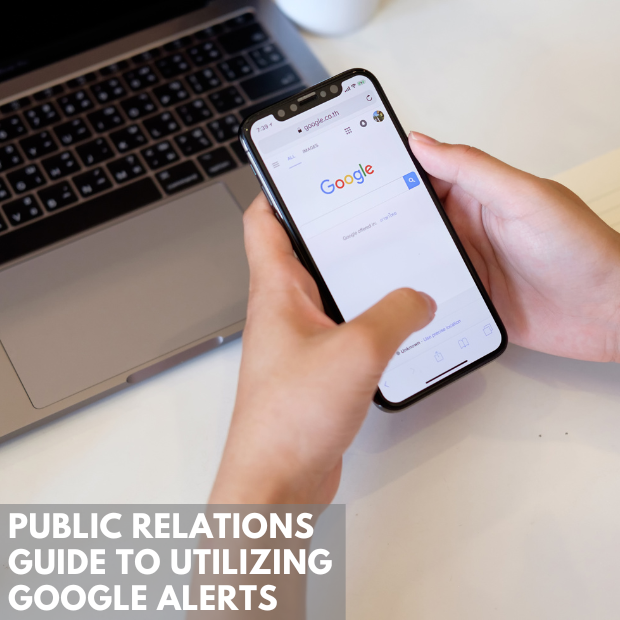
The New Chapters You Should Add to Your Crisis Communications Handbook After Covid-19
By Natalie Ghidotti – Ghidotti | April 12, 2021
Crisis communications as a public relations practice stands out not just in the execution of high level strategies at an amplified pace, but because every crisis communications scenario serves as a stress test for that organization. Whether that crisis plays out in the headlines or gets managed internally, everyone immediately recognizes what worked… and what didn’t. While few organizations could have fully prepared for this past year of Covid-19 and the pandemic response, as companies look forward, they should first look back and take some of those hard lessons learned to heart. If you haven’t taken that hard look inside your organization yet, here are a few new chapters you should consider adding to your crisis communication handbook.

Your Crisis Communications Response Must Be Mobile… All The Time
How mobile is your crisis communications team? Can you easily gather all the information you need, spin up a media response and secure any necessary approvals or review if your lead decision maker is stuck on an airplane? Or maybe, if we can tempt fate for a moment, your Internet service fails or there’s a power outage. That’s right. Kiss that cloud storage backup goodbye for a moment. Will you still have access to necessary assets, templates or be able to reach someone else who can post to your social media accounts? Remember Murphy’s Law: “Anything that can go wrong will go wrong.” Many public relations practitioners have felt those words hang heavy over the past year and not just because of Covid-19. While it’s impossible to prepare for every possible eventuality, we can prepare so that roadblocks that hampered our work in the past do not derail our efforts in the future when they inevitably happen again. A crisis handbook will help.
So, what does this mean for your communications team and decision making leadership? It means you develop redundancies. If everything hinges on one person’s approval and they’re in the hospital having a heart attack, decide who can step in ahead of time instead of the heat of the moment. If you’ve experienced a power or communications outage that lasted more than two hours over the last year, maybe someone should consider an old fashioned landline at home versus their VoIP service or ensure your key communicators have an alternative power source for their smartphones. Set up emergency conference call numbers where key decision makers can connect quickly versus playing phone tag and make sure everyone who needs it has that number saved on speed dial. And as for that cloud storage, ensure you have a download of everything you might need on you, whether you’re stuck at home during a pandemic or alongside the road in the middle of nowhere. As communicators, we love to focus on the message and the strategy, but now is the time to also develop your organization’s crisis communications infrastructure and put plans in place before the next crisis strikes.
Listen Before You Speak in a Crisis
While we must retain the ability to respond quickly in a crisis, a year of the Covid-19 pandemic also provided us with ample opportunities to listen. How are our peers and competitors responding to a situation impacting us all? What do our customers or clients expect? For example, it may not be appropriate for every tech company to weigh in on public health policy during a pandemic, but they could have a significant role in setting expectations for their employees and modeling appropriate responses for their customers. For many of us, the pandemic wasn’t the only crisis we faced this past year either. In a time where it may feel like a constant race to be the first one to Tweet on a given topic, we must remember the value of listening before we speak.
Even in a crisis situation where a swift response is key, there is room to listen. What is a reporter really asking? Who is really covering the news? How are our customers responding on social media? What is the tenor of those conversations and how could our response impact those conversations, either positively or negatively? Listening gives us the room to develop perspective which can guide any and every following response. The last year has provided plenty of time to listen closely, but how we use that perspective still lies with us.
Align ALL of Your Communications, Not Just What You Say to Reporters
It goes without saying these days that a corporate statement on an issue is no longer the only way that organization can be seen as responding to a crisis or really any situation. Once again using Covid-19 as an example, your company can speak all day about following health and safety protocol to protect your employees, but if your leadership shows up on social media or the front page of a newspaper shaking hands, violating health guidelines at a dinner party or doing any one of a thousand other things people were asked to stop doing during the pandemic, all of your other work is immediately undermined. Same thing with your employees. If your company took a hard line on health safety and social distancing, but someone keeps posting photos of employees hanging out in the office without masks, no level of strategy could correct that perception.
Now, more than ever, is the time to ensure your organization speaks with a single voice all of the time, not just in the midst of a crisis. That means taking steps to make sure your media relations and social media teams speak regularly, not just when something goes wrong. It means establishing clear internal communications channels so your staff understands social media protocols and what is or is not OK to share. It also means speaking with any member of your staff that engages with customers or the public to make sure they are just as aligned with your communications strategy and brand voice as the members of your public relations team are.
Learn to Prioritize During Crisis Communications
Finally, this past pandemic year reminded us that it is not only possible, but actually quite likely that you will have to deal with more than one crisis at a time. One may be larger than another or you could face a tsunami of challenges striking all at once. These are the moments when disciplined communications professionals rise to the challenge and lead organizations through a crisis. Even the most exceptional teams may be stretched thin when dealing with multiple crisis situations at once, but they get through by prioritizing one crisis at a time, managing the others and quickly working through the list. And the time to develop that discipline and hone those skills is before the next crisis strikes.








